
Windows Management Tools have always been a great way to manage your installation. They allow you to view ongoing processes, track logs and events, adjust services and tasks on your PC, and more.
But in Windows 11, management tools have changed a lot, and many users are finding it difficult to find them in the operating system. If you're in the same boat, here's everything you need to know about management tools in Windows 11.
Two things happen with management tools in Windows 11. First, they were renamed Windows Tools. You can find them under the same name in many other places in Windows 11.
Second, new existing tools have been added to this category, which was previously a standalone utility in Windows 11. This makes it easier to find and find all your management tools in one place, so you can easily access and switch between them when you need to.
You can access Management Tools or Windows Tools on Windows 11 in 6 different ways. Follow any of the sections below based on your current preferences and requirements.
The tried and tested method of accessing management tools from Control Panel still works. You'll find them under their new names when you launch Control Panel.
Press Windows R to start Run.
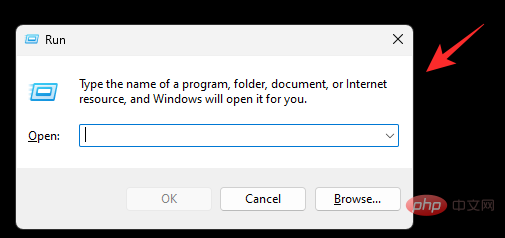
Type the following and press Enter. If needed, you can also access Control Panel from Windows Search.
control
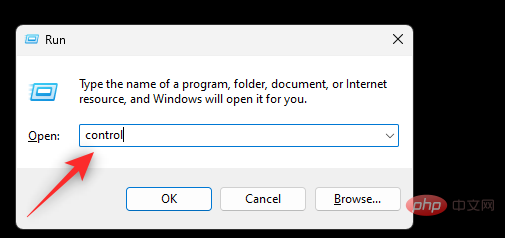
#Click the drop-down menu in the upper right corner and select Large Icon.
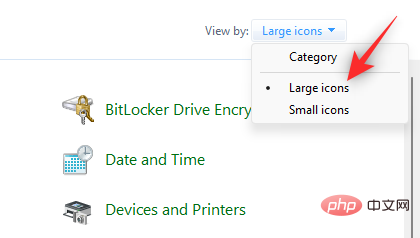
Click Windows Tools at the bottom.
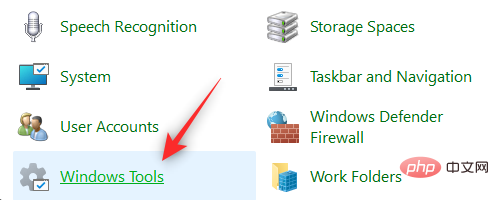
A new folder will now open in File Explorer containing the old management tools and the new Windows tools, all in one place . Double-click and launch your preferred tool to manage your PC.
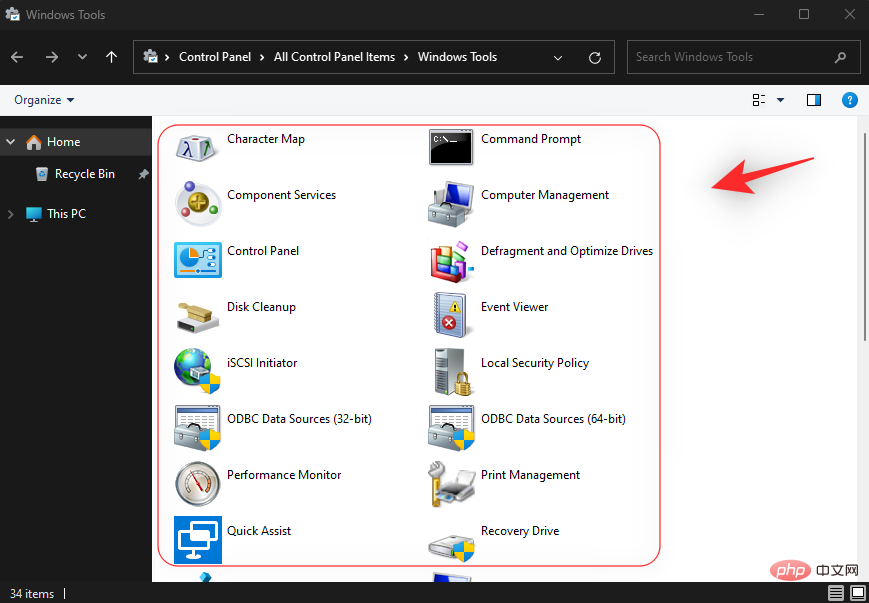
This is how you can access Windows tools from Control Panel.
You can also use "Run" to launch Windows tools from anywhere on your PC. Please follow the steps below to help you through the process.
Press Windows R to start Run.

Type the following and press Enter. If necessary, you can also click "OK".
control admintools
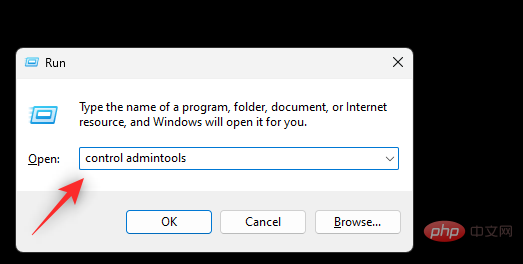
##Note: You can also use the command shell: control administrative tools. However, this will open the old administrative tools list and will not add new Windows tools in Windows 11.

Start menu, enter Windows Tools,then launch the same from the search results tool.
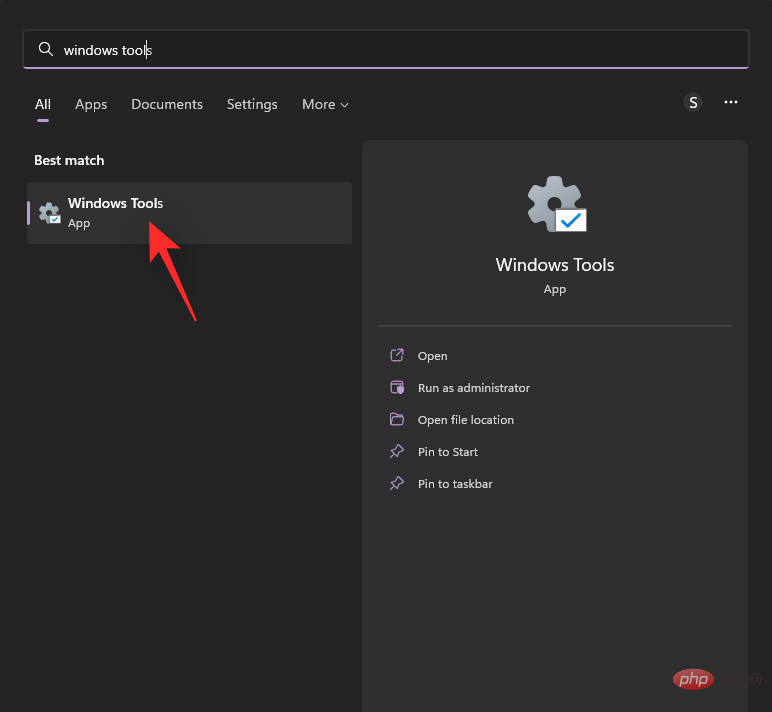

Windows R to start Run.

Type the following and press Ctrl Shift Enter.
cmd
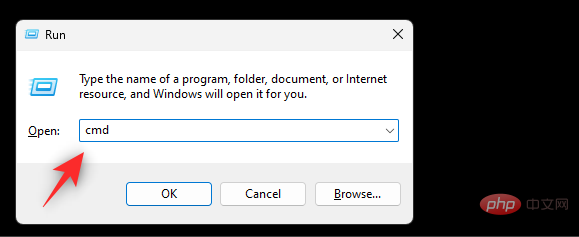
Now use the following command to access Windows Tools.
control admintools
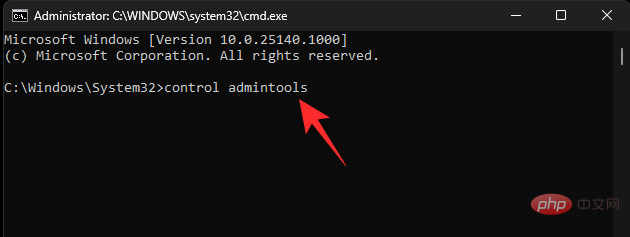
You will now have a File Explorer window with Windows Tools open on your screen.

This is how you can access Windows tools using Command Prompt.
You can also use PowerShell to access Windows tools on your PC. Here's how you can get started.
Press Windows R to start the Run dialog box.

Type the following and press Ctrl Shift Enter.
powershell
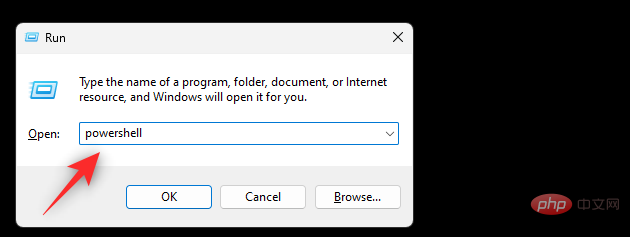
Type the following to open Windows Tools.
control admintools

A new window with Windows Tools will now open on your screen.

You can also create custom shortcuts in your preferred locations to access Windows tools when you need them. Here's how you can get started.
Note: These shortcuts will open the old Windows 10 management tools list, not the new Windows tools list.
Open the desired location where you wish to place the Windows tool shortcut. We will use the desktop in this example. Right-click on an empty area and select New.
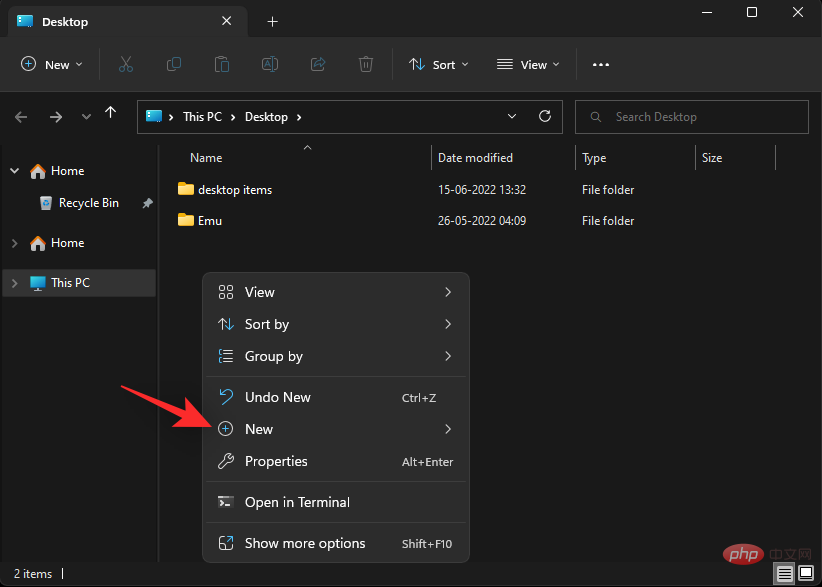
Click Shortcut.
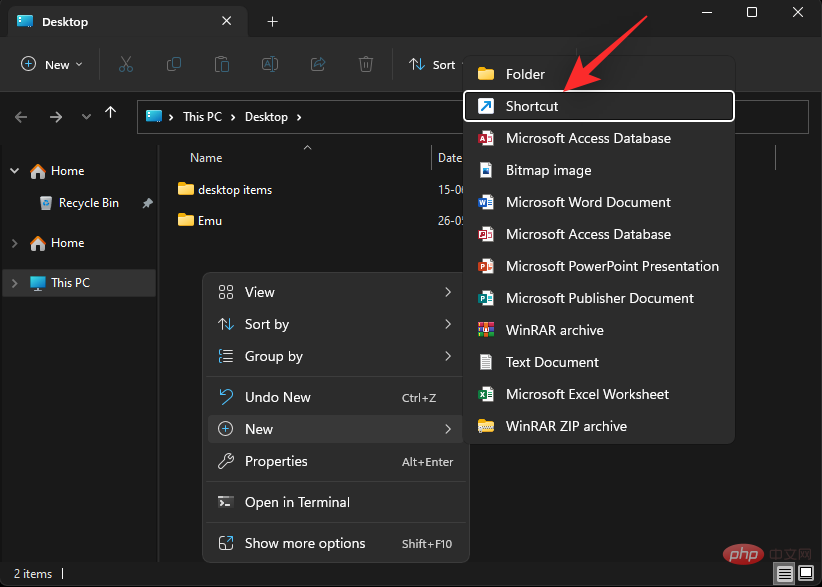
Now copy and paste any of the following paths in the text box.
C:\ProgramData\Microsoft\Windows\Start Menu\Programs\Administrative Tools
%ProgramData%\Microsoft\Windows\Start Menu\Programs\Administrative Tools
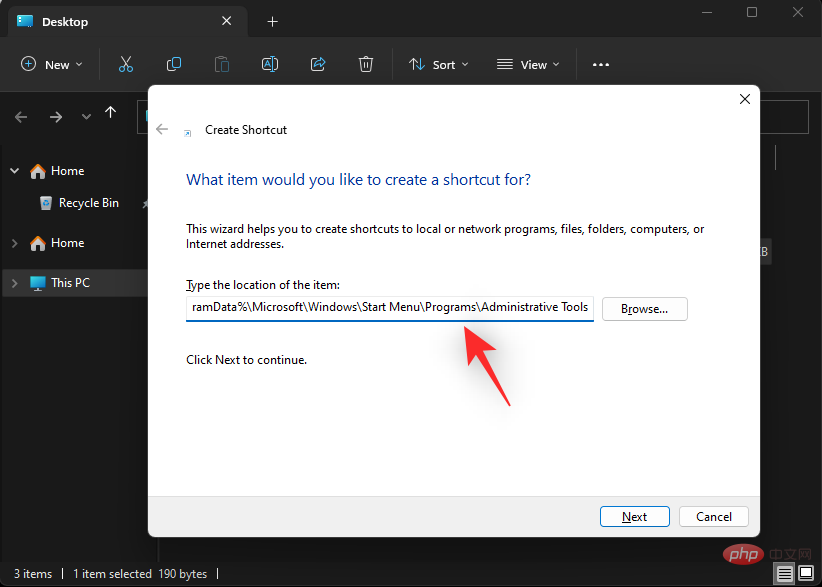
step.
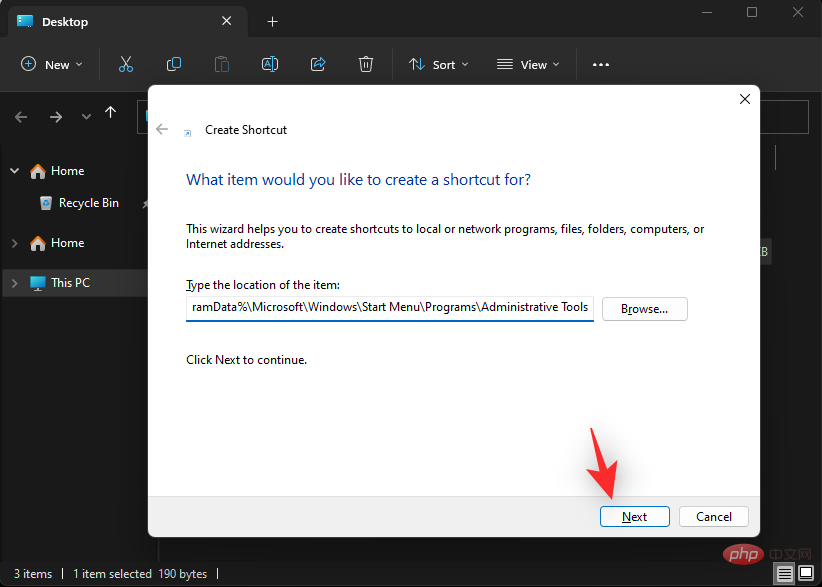
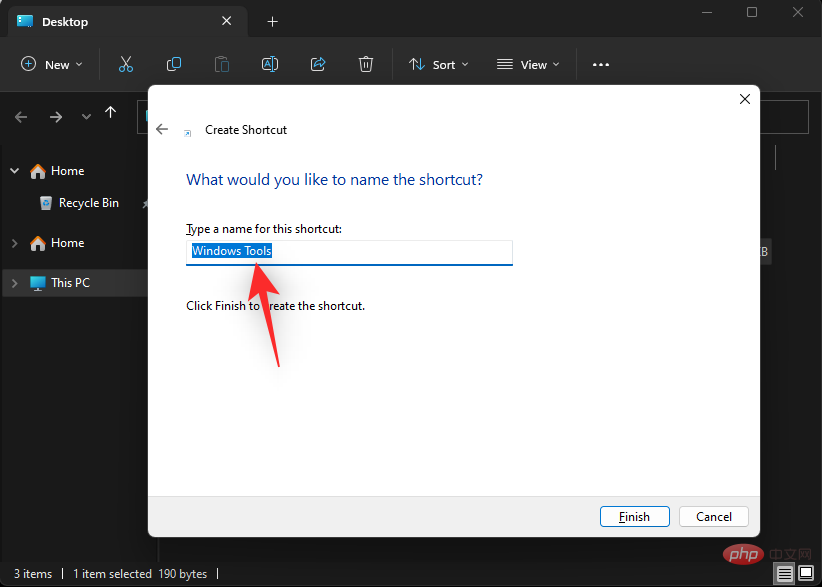
After completing click Finish.
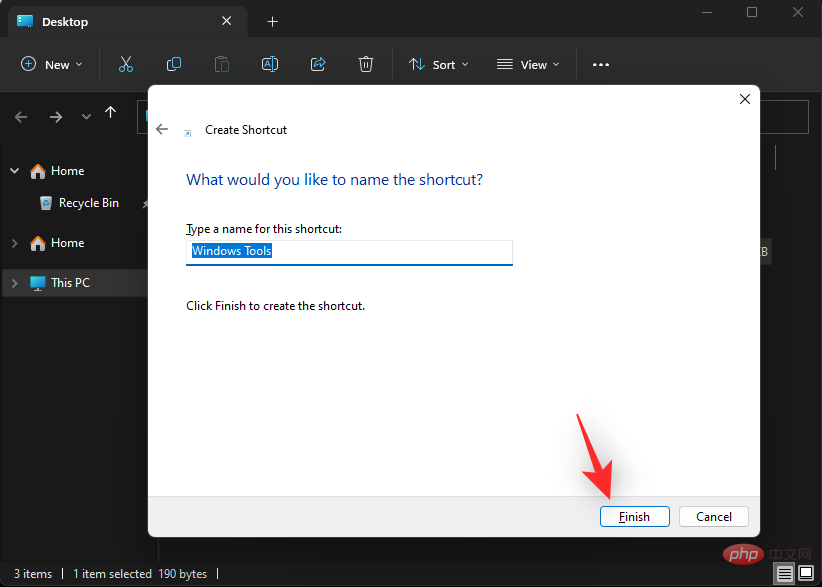
Windows R to start Run.

cmd

Enter: This will launch CMD as the current local user. Ctrl Shift Enter: This will launch CMD as the administrator of the current PC. You will now launch CMD on your PC.
%windir%/system32/dcomcnfg.exe
%windir%/system32/CompMgmtLauncher.exe
%windir%/system32/control.exe
%windir%/system32/defrag.exe
%windir%/system32/cleanmgr.exe
%windir%/system32/eventvwr.exe
%windir%/system32/iscsicpl.exe
%windir%\system32\secpol.msc /s
Windows R to launch Run from anywhere in Windows 11.
Ctrl Shift EscLaunch Task Manager from anywhere in Windows 11.
NOTE: If you wish to launch PowerShell separately, use the same command in Run .
Windows PowerShell ISE (x64 and x86) (legacy)The above is the detailed content of Where can I find management tools in Windows 11?. For more information, please follow other related articles on the PHP Chinese website!
 What are the office software
What are the office software
 Introduction to the meaning of cloud download windows
Introduction to the meaning of cloud download windows
 What to do if temporary file rename fails
What to do if temporary file rename fails
 What to do if avast reports false positives
What to do if avast reports false positives
 The difference between get and post
The difference between get and post
 Telecom cdma
Telecom cdma
 What should I do if the CAD image cannot be moved?
What should I do if the CAD image cannot be moved?
 fakepath path solution
fakepath path solution
 Check if the port is open in linux
Check if the port is open in linux




